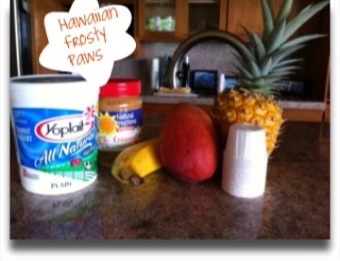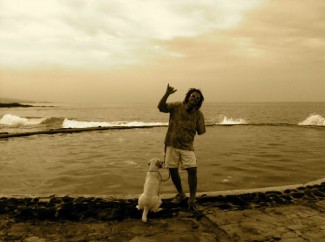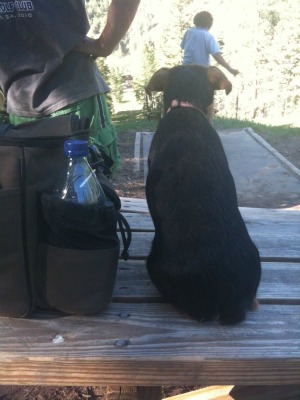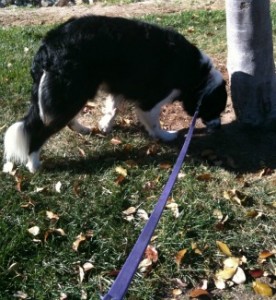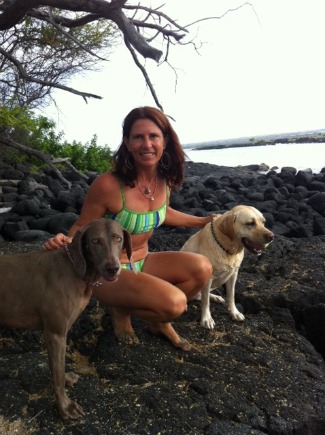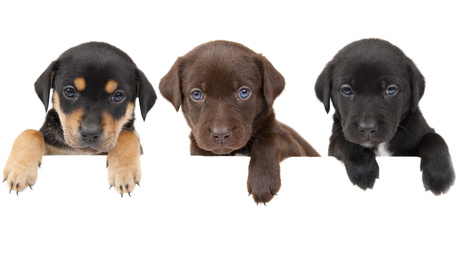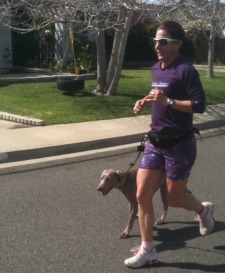 Looking to change how you view running or exercise? Choose a training partner you can count on and then those who say they want to go but come up with excuses a lot of the time can fill in as extras!
Looking to change how you view running or exercise? Choose a training partner you can count on and then those who say they want to go but come up with excuses a lot of the time can fill in as extras!
Studies show training with a companion, training partner, buddy, whatever you want to call it increases your chances of sticking with an exercise program more than two fold. So why not pick a training companion you know you can count on?
Your dog is always ready to go, on your schedule, happy to be your best supporter every single day.
That being said there are a few considerations to take into account when choosing your dog as your running partner.
Veterinary Recommendations
As with you, make sure that your dog is healthy and physically able to run with you. A check at the vet is recommended.
Puppies and dogs less than a year old are still forming bones and ligaments so make sure to limit how much time you spend running or walking your dog from a full training regime. Don’t confuse that statement with refraining from exercise for your young dog at all. This can also turn out to be bad for development and behavioral problems. Just don’t plan on making the puppy a running partner until after reaching a year old.
Running Dog Breeds
There are dogs better built for running than others. The list is long and many times the combined traits of a mixed breed dog are ideal for running. A few breeds that are most excellent as running partners are:
- Labrador Retriever
- Australian Shepherd
- Portuguese Water Dog
- Weimaraner
- Vizsla
- German Short Haired Pointer
- Golden Retriever
- Standard Poodle
- Labradoodles
- German Shepherd Dog
- Belgian Malinois
- Rhodesian Ridgeback
Keep in mind if your dog isn’t a great runner, walking is highly recommended! You can find many more breeds and information about dogs that make great running partners by subscribing or stay updated on the latest Dog Friendly 5K Fun Run & Events here.
Start Running With Your Dog
Acclimation is key to gaining fitness and avoiding injury. Make sure to start your dog off like you would start yourself in a new program. Start with shorter runs and gradually increase your distance.
More is not always better, especially in the beginning. Long time runners coming back to the game sometimes go with the 1 mile, 2 mile, 10 mile program too quickly. If your dog is new to running “muscle memory” is simply not there. Do the gradual build up and you’ll have a running partner in time that will always be willing to go the distance and be completely healthy doing it.
Trails are a better option to run long term for you and your dog. Pavement can be very jarring and the joints and ligaments do much better with the give of trials and soft surfaces. Check your dog’s paws frequently especially early on in a new training program for cuts, scrapes, or cracks and make sure to keep the nails trimmed. Dog boots are a great option if you are acclimating your dog to new terrain with sharp rocks, hot or cold surfaces..
Use common sense regarding time of day you take your dog running. During warm weather the morning or late evening is best. Cold weather on the other hand may require that you let the day warm up a bit before hitting the daily running route. For those dogs that don’t have a lot of extra fur or aren’t acclimated to the cold, providing a dog coat has become a very stylish option to keep your dog warm.
Hydration is a huge factor for you and your dog. To feel good hydration is a must. Dogs sweat differently than we do, with moisture leaving their bodies through their nose, tongue and paw pads. Ignoring the signs of dehydration early on is easy since the physical signs of sweating are absent. Make sure to bring water for you and your dog.
No matter how much you train or exercise if your nutrition is bad you still are dealing with health issues. Make sure to feed your dog a holistic balanced dog food. The type of food and the amount are as important as a consistent exercise program.
If you got some good from this post and want more running tips, K9 Cross Training ideas or Hawaii Lifestyle Retreat plans subscribe.
Follow Big Island Dog on Twitter
Aloha Wags!

